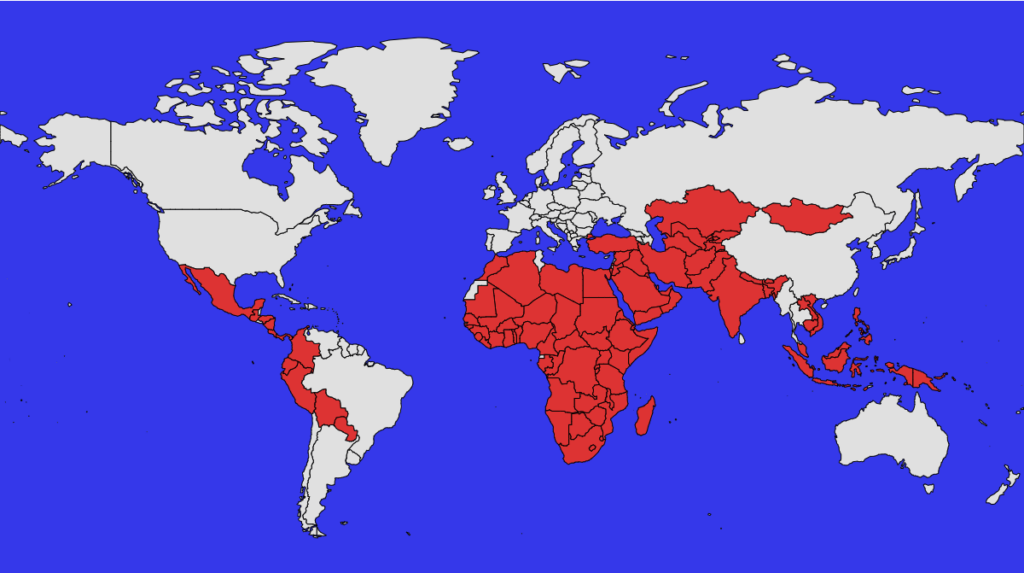HUMAN BIRTH RATE BOMB
The ten countries listed below have added 2.09 billion people in under 65 years, increasing the global population by 25%, which now stands at 8 billion. Such rapid population growth threatens biodiversity, and we urgently need a global debate to protect our environment.

“The map below highlights countries that have tripled their populations since 1960, contributing significantly to global growth.”

Addressing Rapid Population Growth in Developing Countries
Rapid population growth is a complex issue, particularly in developing nations. To address global population concerns, we must first tackle the underlying causes.
Why Are Families Larger in Developing Countries?
Many in wealthier nations struggle to understand why families in poorer regions have many children. Several key factors drive this trend:
1. The Link Between Poverty and Population Growth
-
Low-income countries experience the highest birth rates.
-
Equitable wealth distribution could improve economic stability and naturally reduce family sizes.
-
Despite a global food surplus, millions still go hungry due to financial barriers (Million Meals Mission Report).
2. The Impact of Corrupt Governments
Corrupt governments fail to invest in basic necessities like education, healthcare, and sanitation.
📌 Example: Nigeria
✔ Population in 1960: 45 million → 2022: 219 million
✔ Average annual income: $6,280
✔ Nigerian President Bola Tinubu’s wealth: $8.4 billion
⚠ Economic disparity like this highlights governance failures that contribute to continued poverty and high birth rates.
3. Land Displacement and Urban Sprawl
-
Foreign land grabs displace rural populations, forcing them into overcrowded urban areas.
-
This increases poverty and exacerbates resource scarcity.
4. Women’s Rights and Family Planning
-
Limited access to contraception: 225 million women in developing countries want to delay or stop childbearing but lack access (UN Report).
-
Cultural expectations force women into early marriage and motherhood, reducing educational and employment opportunities.
5. Economic Insecurity and High Child Mortality
-
Families have more children for financial security in old age.
-
High child mortality rates due to malnutrition and disease contribute to large families.
6. Misuse of Foreign Aid
-
Much foreign aid is spent on military and policing instead of education, healthcare, and infrastructure.
-
Redirecting funds could help stabilize population growth.
Conclusion: The Need for Global Action
If we are to address rapid population growth effectively, we must focus on:
✅ Fair wealth distribution to improve living conditions.
✅ Tackling corruption to ensure responsible governance.
✅ Empowering women through education and family planning.
✅ Improving healthcare to lower child mortality rates.
✅ Redirecting foreign aid toward essential services rather than military spending.
🗣 The world needs an urgent global discussion on population growth and sustainability.
What are your thoughts? Share your views on my blog page!
Sources
World Bank Population Data
World Hunger: 12 Myths
